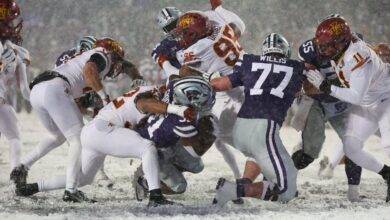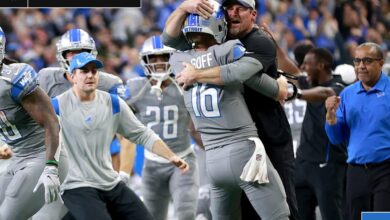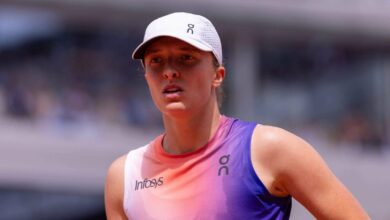Super power naps, light therapy, sour cherry juice: a sleep recipe for results on the ice

BOSTON — Around midnight, three hours into his semi-regular commute from Boston to Madrid, Dr. Alen Juginovic removes an essential item from his carry-on bag.
For about 30 minutes, if his housemates approve, Juginovic, a sleep consultant for Real Madrid and a postdoctoral researcher at Harvard Medical School, turns on his light box. It dampens the rise in melatonin, the hormone released at night to signal to the body that it’s time to sleep. The light box, combined with the caffeine he consumes at the same time, helps Juginovic stay alert for the meetings he has with the football team the next morning when he arrives.
“It’s a $19, $20 lamp on Amazon,” said Juginovic, who is also a lecturer at Harvard’s Faculty of Arts and Sciences. “It’s not cutting-edge technology.”
For NHL players, such investments can mean the difference between winning and losing.
Sleep is everything for elite athletes. According to a 2011 study of Stanford University basketball players, a five- to seven-week sleep extension period (at least 10 hours per night in bed) resulted in faster sprints, greater shooting accuracy, and improved mood. In a 1994 study, eight weightlifters who were restricted to three hours of sleep for three consecutive nights performed worse on the bench press, leg press, and deadlift, compared with after a control period.
In terms of cognition, a 2012 study of 12 handball goalkeepers found that reaction time, selective attention, and sustained attention were more affected by sleep deprivation than controls. Impaired executive functions can not only lead to poor results, but they can also put athletes in more dangerous situations and increase the risk of injury.
“Players who are at the peak of their game want that 0.1 percent performance boost,” Juginovic said. “I’m not saying sleep is going to improve your performance by 5 million percent. But you can get that 0.1 percent. It can really be the deciding factor in a crucial last-minute game between scoring or hitting the post.”
In the NHL, getting enough sleep is easier said than done.
Morning skates, 7 puck drops, post-game travel, and the physical and mental stresses of competition turn consistent sleep schedules on their head. The concept of normal sleep is so abnormal that post-game training sessions — getting dressed when most people are relaxing — are standard.
But through sleep personalization, NHL teams can optimize their players’ alertness on the ice and maximize recovery before and after games. Juginovic’s playbook includes:
1. Get tested
Polysomnography, performed overnight in a sleep lab, is the gold standard. The procedure measures oxygen levels, brain waves, eye movements, heart rate and airflow. Polysomnography determines how long a subject spends in the sleep cycle, which lasts about 100 minutes and repeats throughout the night, with stage 1 (light sleep), stage 2 (slightly deeper sleep), stage 3 (deep sleep) and rapid eye movement (REM) sleep.
Stage 3 is the most restorative segment. For example, polysomnography can help diagnose sleep apnea, which prevents a player from maximizing Stage 3.
Juginovic also recommends a saliva test to determine when a player is secreting melatonin. According to Juginovic, secretion typically begins at 9 p.m., peaks between 3 and 4 a.m., and drops to almost zero between 7 and 8 a.m.
For example, through testing, teams can identify a player who secretes melatonin earlier than others. That player could undergo light therapy during a trip west to delay sleepiness and alleviate jet lag.
Juginovic also recommends pharmacogenetic testing, using a buccal swab, to measure how a player metabolizes caffeine and melatonin. If a player metabolizes caffeine quickly, he can take larger doses to promote alertness than a teammate who metabolizes it more slowly.
2. Personalize the training times
If a coach wants to practice at 11:00 am, the players have no choice but to go on the ice at that time.
But if the day also requires off-ice training, teams should allow players to train at times that fit their corresponding categories: morning person, evening person, or somewhere in between. A morning person may be best off training before practice. A night owl may feel fresher in the afternoon.
“If you understand that this person is a morning type, give that person training in the morning. Because they are the most focused and energetic. Not at 4 p.m.,” Juginovic said. “But for the players who are night types, put that training back. Put it at 11 or 12, depending on the nutrition, meal schedule, all that kind of stuff. But don’t put it at 7 a.m.
3. Limit pre-game naps to 30 minutes
In a normal circadian rhythm, a dip usually occurs between 2:00 and 4:00 PM. This is a good time for players to take a nap, so that it coincides with their natural sleepiness.
However, a player who naps for more than 30 minutes may enter stage 3. A player who sleeps deeply in the afternoon will likely have difficulty falling asleep at night. This limits critical recovery.
To enhance the restorative effects of a 30-minute nap, Juginovic recommends consuming caffeine before falling asleep. It takes the average person 30 minutes to process caffeine. A cup of coffee will therefore take effect shortly after the player wakes from their nap.
“You’re going to take caffeine, fall asleep, wake up with the caffeine peaking,” Juginovic said. “So you’re getting the double boost of the power nap plus the caffeine you get after you wake up.”
4. Light therapy and caffeine before the competition
About an hour before puck drop, players are usually warming up. Some are kicking a soccer ball around. Others are stretching.
Juginovic prescribes bright light therapy of 10,000 lux, a unit that translates to one lumen per square meter. Bright light therapy suppresses the release of melatonin, which promotes alertness during play.
Players warming up may not have time to sit in front of a 10,000-lux light box for 30 minutes. So maybe they can do their pre-game preparations in a brightly lit room, not in shadowy corners next to the Zamboni.
“That player should get a 10 to 20 percent energy boost. ‘Oh, I didn’t feel as tired as I normally do,'” Juginovic said. “Ten percent is a lot.”
Juginovic also recommends taking coffee or a caffeine gel 30 minutes before the puck drops. However, a night owl should proceed with caution. According to Juginovic, it typically takes four to nine hours to excrete 50 percent of caffeine. If a player identifies as a night owl, it may be counterproductive to take caffeine before a game due to the potential for it to disrupt sleep that night.
5. Road teams must stay overnight and continue their journey the next day unless it is a short flight home
It is detrimental for players to fall asleep in the middle of the night, wake up at 2am upon arrival, drive home, struggle to fall asleep, and then report back to the rink for practice the next day. It is better to start the sleep cycle earlier in the hotel.
“Let’s rest,” Juginovic said. “Let’s get that restorative sleep. It’s super important for muscles, for body, for brain, for everything. And then let’s travel tomorrow.”
6. Good sleep hygiene after the match
Juginovic recommends the following:
- A post-match meal, two or three hours before bedtime, rich in melatonin: chicken, fish, nuts, rice, pasta, sour cherry juice.
- A dark bedroom to stimulate the production of melatonin.
- No screen time, because light suppresses melatonin levels.
- A bedroom with a temperature of 20 degrees Celsius or lower.
- Shower, read and take deep breaths to reduce stress and get away from the game for a while.
- Exposure to sunlight immediately after waking the next morning triggers the circadian clock.
7. Plan ahead for traveling across multiple time zones
On December 10, the Florida Panthers begin a five-game road trip in Seattle. Later that week, the Stanley Cup champions play in Vancouver and Calgary. All three games are at 10:00 p.m. Eastern Time.
Sleep experts have concluded that the circadian rhythm needs one day per time zone to adjust, so a week before the trip the Panthers should try to stay awake for 20 minutes longer each night.
However, chances are the Panthers won’t be fully acclimated to Pacific time upon arrival. They’ll likely be sleepy the night after the Kraken game and before they play the Canucks. So on the evening of December 11th, they should use light boxes for 30 minutes to suppress melatonin release and further acclimate to Pacific time. This will better prepare them for the next night’s game against the Canucks on December 12th and the Flames on December 14th.
Conclusion
Players who follow Juginovic’s recommendations should feel fresher, play better and have a greater chance of results. Juginovic’s pitch is simple: Sleep to win.
“We want that 0.1 percent,” Juginovic said. “I don’t know the percentage. But that little bit can make a difference. When you’re at the top level, you’re one of the top 50 players, you’re obviously incredible in terms of fitness and all that stuff. But maybe sleep can give you that little bit extra that other players don’t have.”
(Photo of Florida Panthers celebrating a goal: Harry How/Getty Images)




